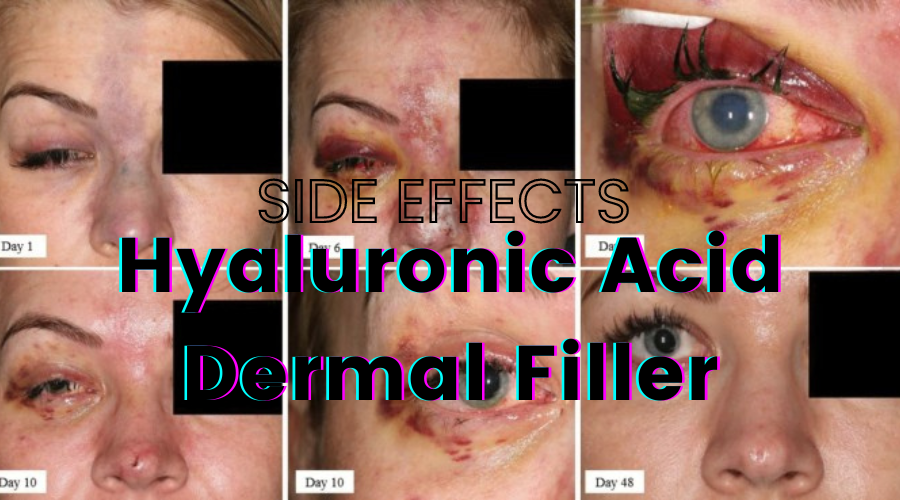
Oct 2,2023
Hyaluronic acid dermal fillers have become famous for those seeking to rejuvenate their appearance without surgery. These non-invasive procedures offer impressive results with minimal downtime. However, hyaluronic acid filler side effects can occur like any medical treatment. This comprehensive guide delves into common and rare hyaluronic acid dermal filler side effects, shedding light on what you should know before opting for this cosmetic enhancement.
Immediately after a dermal filler injection, it's common to experience some swelling and redness at the injection site. This typically subsides within a few days as your body adjusts to the filler.
Bruising is another common side effect, especially when injections are administered near blood vessels. While it may be unsightly, bruising generally fades within a week or two. To minimize bruising, avoid blood-thinning medications and supplements before your treatment.
You might feel some tenderness or discomfort at the injection site. This usually resolves quickly but can persist for a few days. Over-the-counter pain relievers and ice packs can help alleviate these sensations.
Minor lumps or bumps may occasionally develop under the skin, especially if the filler is not evenly distributed during injection. Massage and time can often smooth out these irregularities, but in some cases, your practitioner may need to adjust the filler.
Actual allergic reactions to hyaluronic acid fillers are infrequent. However, they can happen. Symptoms may include severe swelling, itching, and hives. If you suspect an allergic reaction, seek immediate medical attention.
Infections are very uncommon but possible. Signs of infection include persistent redness, pain, and warmth at the injection site. Your practitioner will provide instructions to minimize infection risk, such as keeping the area clean.
Though exceedingly rare, vascular complications can occur when the filler is inadvertently injected into a blood vessel. This can lead to skin damage, tissue death, or even vision impairment if it affects the eye area. Choosing a skilled, experienced injector reduces this risk.
Sometimes, the body may react to the filler by forming nodules under the skin. These may be palpable and visible. Your practitioner can address this issue through massage or, if necessary, by dissolving the filler.
To minimize the risk of hyaluronic acid filler side effects, choosing a qualified practitioner is crucial. Additionally, follow their post-treatment care instructions diligently. Avoid alcohol and strenuous exercise for a day or two after dermal treatment, and use sun protection to prevent further complications.
In conclusion, while hyaluronic acid dermal fillers are generally safe and well-tolerated, it's essential to be aware of potential side effects, both common and rare. Open communication with your practitioner is critical; they can help you understand what to expect and address any concerns. When administered by a skilled professional, hyaluronic acid fillers can offer beautiful, natural-looking results with minimal risk.